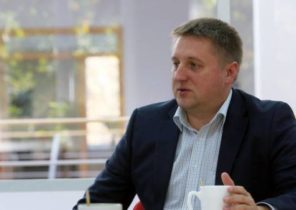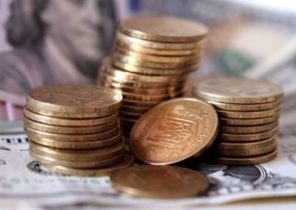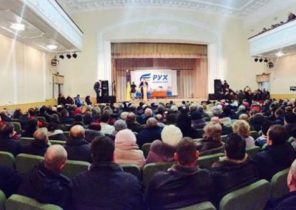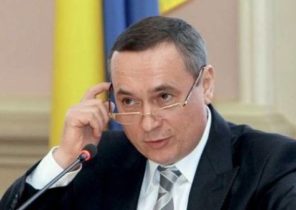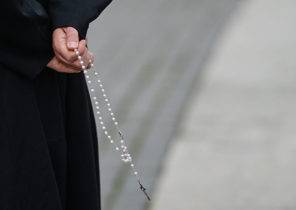
Two centuries ago to get from the Baltic sea to the Adriatic through the Black was on the territory of only two countries: the Russian and Ottoman empires. Today, 60 years after the signing of the Treaty of Rome a quarter of a century after the fall of the iron curtain, you have to go through a dozen countries on the way from Tallinn (Estonia) to Trieste (Italy) to Odessa (Ukraine). A dozen of the now-independent States, whose fate is still being resolved in other capitals yesterday in Saint-Petersburg and Constantinople, today in Moscow, Brussels, Washington and Ankara.
As with any area at the intersection of “geopolitical tectonic plates”, Eastern Europe is regularly confronted with to-day earthquake triggering, which discompose the “old Europe”. This applies, in particular, of the rebellion “ungrateful”, the leaders of the “new” European countries that headed the Hungarian Prime Minister Viktor Orban give back to Brussels. Or success in the elections Pro-Russian parties, as it was recently in Bulgaria.
I worked as a correspondent for le Monde in Berlin until the summer and decided to go for these countries to understand how the wind blows. To understand the reasons for their dislike of Europe and the new thrust into Russia. To perform so often referred to the turn of history. I drove from the North (Estonia, Latvia, Lithuania, Poland) to South (Croatia, Slovenia to Trieste Italian) through the Black sea (Ukraine, Romania, Bulgaria), Hungary, Sergius and Bosnia. My goal was to chat with along the way because I am convinced that the “main reward of the unusual trip is meeting with ordinary people,” wrote françois Maspero (François Maspero) in the “Balkan transit”.
“We need the Russians learned Estonian”
Summer. Saturday night. Tallinn. In this Baltic port, thousands of tourists from all over the world (primarily from Asia) stormed the restaurants beautifully restored old town. Local youth races in the popular quarter Telliskivi: there are old factories have been converted into “creative city”. Bars, galleries, clothing stores, clubs… the Choice is huge. In local concept store two elegant girls, mistress and her friend, sell designer goods with inscriptions, of which the three first letters of the country name: the sexiEST, the bEST, boldEST, ESTonishing…
Yes, they love their country and are proud of it. A time when, to succeed, the Estonian had to marry Finn and forget their native language, as in “Stalin’s cows”, Sofi Oksanen (Sofi Oksanen), in the past. Girlfriend (she has lived in Spain), in perfect English says he loves the city and no longer going to move abroad. Although much optimism it does not. “You know, we were just 1.3 million. Our future does not depend on us. How to develop Europe? What Putin has done? That’s all that matters”.
This feeling of lack of control over their own destiny meets me throughout the trip to peripheral countries of Europe. Although half of the population of Tallinn is Russian, my interviewee acknowledges that Russian-speaking friends it does not. “First we need to learn our language and no longer consider it a dialect” — justified by it. Like Latvia, Estonia is ready to provide residents on the territory of Russian citizenship and related rights only if they learn the state language. However, such a requirement does not seem obvious, especially to those people who studied during the Soviet era.
Estonians almost never hide their contempt for those citizens of the second category. “You really want to go in sillamäe?” Employee of the Tallinn Department of tourism in confusion. What’s there to see in this city in the East, only 30 kilometers from the Russian border? She has never not been there. Stalin, the disposal of which there was built a nuclear silo, closed the city to all non-Russians. Sillamäe was not even on the cards. Today 96% of the population is Russian (the record for the country), and the municipality has no other trumps, in addition to the Soviet development plan, which allows guests to compare the architectural styles of three leaders: Stalin, Khrushchev and Brezhnev.
Yesterday’s a Ghost town, today, sillamäe becomes a silent witness of the era, which in Estonia would like to forget. Between a city with 15 thousand population, where time seems to have stopped 40 years ago, and the rest of the country (luxury Tallinn, University Tartu and pärnu resort) there is a growing gap (and the bitterness). While sillamäe languishes for a pittance and sells housing (the apartment is 65 square meters there is only 8 thousand euros), Tallinn turns the page: the developer is remaking the former premises of the KGB in the “premium apartments”.
The majority of Latvians is not easy to make ends meet
At the entrance to the Latvian station “Zolitude” appeals to me the forty year old blonde. Like many residents of Riga, on Sunday she travels by train to Jurmala beach, 30 kilometers from the capital. She taught French at Charleroi in the 1990-ies, but not eager to reminisce about those times. Today she has a Latvian passport and a job in a Bank. “I was born here, but in a Russian family. So I had to pass the citizenship exam. Son I went to Latvian school. I have nothing to do in Russia, because I never lived there, and we do not think the Russians,” she says before heading out for a jog on the beach.
If yesterday jūrmala was a favorite place of the Soviet nomenklatura, now this is a favorite resort of the Russian bourgeoisie, which travels there driving German sedans. Anyway, all this luxury and beautiful building in art Nouveau style, which gives Riga the similarity with Vienna, should not mislead: the majority of the population find it difficult to make ends meet. In the covered market of the capital, where another is preserved since Soviet times Uzbek bakery to buy cakes for 28 cents and to stumble upon “grandmothers” of indeterminate age who sell plastic bags for a few cents.
Although Russian-speaking mayor of Riga, could pass for a supporter of the Kremlin, Vladimir Putin here not only friends. In the centre plastered with signs reading “Putler” in which the Russian President is depicted with a clearly recognizable mustache. The Germans here love is hardly more than the Russians. From the XV century to 1919, the descendants of the Teutonic knights established the present feudal regime in the South and the North of Lithuania. The French have long forgotten about the existence of a country like Kurland. But not Latvians. In addition, only 20 years after the proclamation of independence in 1918, they were waited by the unprecedented scale of the disaster, the cause of which again the Germans. “During the Second world war killed half a million Latvians, one-third of the total population. Their place was taken by the Russians and the Ukrainians,” — said the Dutch writer Jan Brocken (Jan Brokken) in the magnificent essay “Baltic souls”. At the same time in Paris is now very popular musical “Summer of ’44”. If France went through such hecatombe from 1939 to 1945, formed to Europe in 1957? And signed to de Gaulle Treaty of friendship with Germany 1963?
“Today, Lithuania is Europe”
Incredible meeting in an incredible location at the foot of the hill, top of which shows what is happening in the neighboring country on the other side of no man’s land under the eloquent title “valley of death”. We are not on the border of the two Koreas, and in Europe. In the middle of the thin strip of land stretching 80 kilometers, which separates Lithuania from Russia. The Northern part of Lithuania, while the southern belongs to the Kaliningrad region, where Putin has deployed nuclear missiles.
Man with a thick black beard sipping an aperitif. “I’m 42 years old. I was born in Lithuania, but my family moved to Israel in 1991. I first came back. For me this is an important point. Previously, it was a Communist country, and now Europe.” Before the Second world war in the capital Vilnius had 100 synagogues. Today they were only one — despite the fact that churches in the “Northern Rome” more than fifty.
Despite the name, opened in the former prison of the KGB Museum of genocide victims pays only a few terse phrases 200 thousand killed by the Nazis by Lithuanian Jews. The fact that thousands of Jews died at the hands of the Lithuanians, is also not mentioned. The main theme of the Museum of the Soviet occupation. For the Baltic countries, the war ended in 1945, and in 1991. And tragically. Bloodless fall of the Berlin wall erased from our minds that in January 1991, when Lithuania declared its independence, Mikhail Gorbachev sent tanks into Vilnius. January 14, killed 14 Lithuanians, after which the Parliament established the memorial.
On one side you can see a panel where crocodile, Russia, in one fell swoop, swallows free. After the partial occupation of Poland from 1918 and full occupation by the Soviet Union since 1945, Lithuania finally gained independence with the collapse of the Soviet Union. The greatest geopolitical catastrophe of the twentieth century, according to Vladimir Putin…
